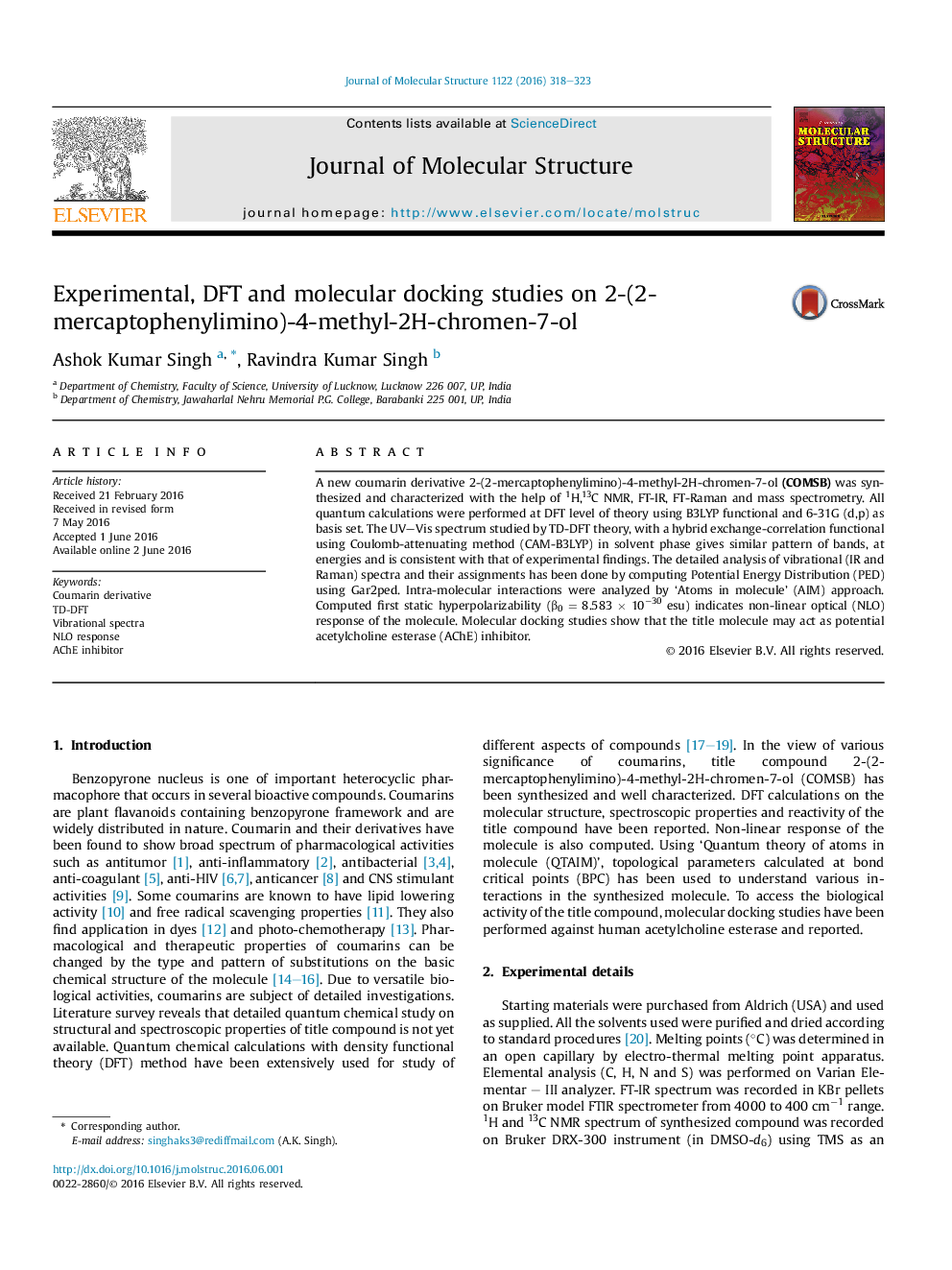| Article ID | Journal | Published Year | Pages | File Type |
|---|---|---|---|---|
| 1407696 | Journal of Molecular Structure | 2016 | 6 Pages |
•Experimental FT-IR and FT-Raman wavenumbers are in agreement with theoretical results.•TD-DFT calculation shows that major electronic excitations arise from π → π* transitions.•Computed first static hyperpolarizability (β0) of 8.58 × 10−30 esu indicates NLO response.•Docking results shows title molecule to be a potential AChE inhibitor.
A new coumarin derivative 2-(2-mercaptophenylimino)-4-methyl-2H-chromen-7-ol (COMSB) was synthesized and characterized with the help of 1H,13C NMR, FT-IR, FT-Raman and mass spectrometry. All quantum calculations were performed at DFT level of theory using B3LYP functional and 6-31G (d,p) as basis set. The UV–Vis spectrum studied by TD-DFT theory, with a hybrid exchange-correlation functional using Coulomb-attenuating method (CAM-B3LYP) in solvent phase gives similar pattern of bands, at energies and is consistent with that of experimental findings. The detailed analysis of vibrational (IR and Raman) spectra and their assignments has been done by computing Potential Energy Distribution (PED) using Gar2ped. Intra-molecular interactions were analyzed by ‘Atoms in molecule’ (AIM) approach. Computed first static hyperpolarizability (β0 = 8.583 × 10−30 esu) indicates non-linear optical (NLO) response of the molecule. Molecular docking studies show that the title molecule may act as potential acetylcholine esterase (AChE) inhibitor.
Graphical abstractFigure optionsDownload full-size imageDownload as PowerPoint slide
